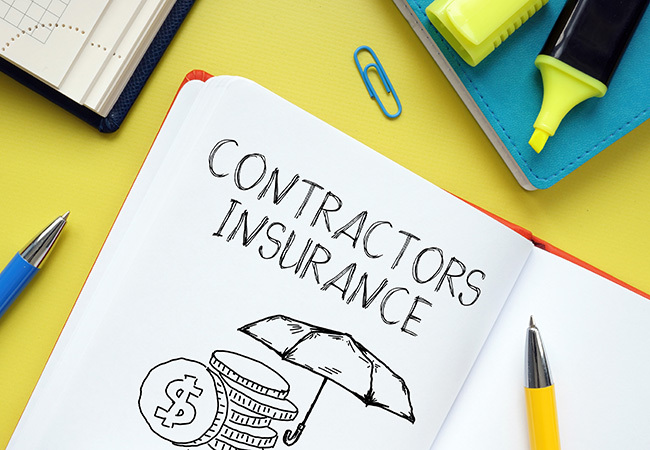Preventing Work Injuries: Strategies for a Safer Workplace (OCMI)
Importance Of Workplace Safety And Injury Prevention
Workplace safety and injury prevention are of paramount importance in any organization.
Ensuring a safe work environment not only protects employees from harm but also contributes to increased productivity, employee morale, and overall business success.
By prioritizing workplace safety, businesses can reduce the occurrence of accidents, injuries, and illnesses, leading to lower healthcare costs, fewer absences, and improved employee retention.
Moreover, a strong commitment to safety demonstrates an organization’s care for its workforce, enhancing its reputation and attracting top talent.
The purpose of this blog post is to equip readers with effective strategies for creating a safer work environment.
By providing practical insights and recommendations, the post aims to empower employers and employees alike to take proactive measures in preventing work-related injuries.
It will cover a range of topics, including understanding risks, establishing a safety culture, implementing safety measures, promoting ergonomics, handling hazardous materials, emergency preparedness, incident reporting, and ongoing evaluation.
By following these strategies, organizations can foster a culture of safety and protect the well-being of their employees while reaping the benefits of a safer and more productive workplace.
Understanding the Risks in the Workplace
Understanding the risks associated with the work environment is crucial for effective workplace safety.
This involves several key aspects.
Firstly, identifying common workplace hazards is essential. These can include physical hazards such as slippery floors, falling objects, or machinery accidents, as well as chemical hazards, ergonomic risks, and potential threats related to work processes or tasks.
By being aware of these hazards, employers can take proactive measures to mitigate them and prevent accidents and injuries.
Secondly, assessing the potential risks specific to the industry is vital. Each industry has its own unique set of risks and hazards. For example, construction sites face hazards related to working at heights, while healthcare facilities may have risks associated with infectious diseases or patient handling.
By conducting industry-specific risk assessments, employers can gain a comprehensive understanding of the potential dangers present in their particular field and develop targeted safety strategies accordingly.
Lastly, recognizing the impact of work-related injuries on employees and businesses is crucial.
Workplace injuries can have severe consequences, ranging from physical pain and suffering for the affected employees to financial burdens for both the workers and the organization.
Employees may face medical expenses, loss of income, and potential long-term disabilities, while businesses may experience increased insurance costs, decreased productivity, and damage to their reputation.
Understanding these impacts highlights the importance of prioritizing workplace safety and taking proactive measures to prevent injuries, protect employees, and safeguard the overall well-being and success of the business.
Developing a Safety Culture
Developing a safety culture within an organization is essential for creating a workplace where safety is valued and prioritized by everyone.
This involves several key components. Firstly, promoting a culture of safety from top to bottom is crucial. Leadership should lead by example, demonstrating a commitment to safety through their actions and decisions.
When employees observe their superiors prioritizing safety, it reinforces the importance of safe practices throughout the organization.
Secondly, encouraging employee engagement and participation in safety initiatives is vital. Employees are the frontline in identifying potential hazards and implementing safety measures.
By involving employees in safety committees, training sessions, and decision-making processes, their valuable insights and experiences can contribute to a safer work environment.
Empowering employees to take ownership of safety cultivates a sense of responsibility and increases their investment in maintaining a safe workplace.
Lastly, establishing clear safety policies and procedures is paramount. Organizations should develop comprehensive safety guidelines that address various potential hazards and provide step-by-step procedures to mitigate risks.
These policies should be communicated effectively to all employees and regularly reviewed and updated as needed.
Clear expectations regarding safety protocols help ensure consistency and compliance across the organization, minimizing the chances of accidents and injuries.
By developing a safety culture that promotes a top-down commitment, encourages employee engagement, and establishes clear policies and procedures, organizations can foster an environment where safety becomes ingrained in every aspect of work.
This not only reduces the likelihood of accidents but also creates a sense of trust, well-being, and productivity among employees, ultimately contributing to the overall success of the organization.
The Crucial Role of Employee Training and Education in Workplace Safety
The following aspects highlight their significance:
Providing Comprehensive Safety Training
Providing comprehensive safety training is of utmost importance. It ensures that employees are equipped with the necessary knowledge and skills to identify and address potential hazards.
Through comprehensive training programs, employees can learn about safety protocols, proper use of equipment and machinery, emergency procedures, and best practices for injury prevention.
By investing in thorough training, employers empower their workforce to make informed decisions and take proactive measures to maintain a safe working environment.
Incorporating Regular Safety Education Sessions
Incorporating regular safety education sessions is essential for reinforcing and updating employees’ knowledge and skills.
Safety practices and regulations evolve over time, and it’s crucial to keep employees informed about the latest standards and techniques.
Regular education sessions, such as workshops, seminars, or safety briefings, provide opportunities to address emerging safety concerns, reinforce good practices, and address any questions or concerns raised by employees.
By keeping safety at the forefront of employees’ minds, organizations foster a culture of continuous learning and improvement.
Ensuring Employees Are Equipped With The Knowledge
Ensuring employees are equipped with the knowledge and skills to prevent injuries is critical for maintaining a safe workplace.
Comprehensive training and education programs should focus on imparting not only theoretical knowledge but also practical skills.
Employees should be trained on proper use of personal protective equipment (PPE), safe handling of tools and materials, ergonomic practices, and recognizing early signs of potential hazards.
By equipping employees with these essential skills, organizations empower them to actively participate in injury prevention efforts and contribute to a safer working environment.
By prioritizing employee training and education, organizations demonstrate their commitment to employee well-being and safety.
A knowledgeable and skilled workforce not only minimizes the risk of workplace accidents and injuries but also boosts employee confidence, engagement, and productivity.
Providing comprehensive training, incorporating regular education sessions, and ensuring employees are well-equipped to prevent injuries are fundamental steps towards creating a safety-conscious culture and protecting the welfare of both employees and the organization.
Implementing Effective Safety Measures
Implementing effective safety measures is a key aspect of ensuring a safe work environment.
The following points elaborate on important components of this process:
A. Conducting regular workplace inspections and audits is crucial for identifying potential safety hazards. By proactively inspecting the workplace, employers can identify any existing or potential risks that may compromise the safety of employees.
These inspections can cover various aspects such as equipment, machinery, electrical systems, structural integrity, and housekeeping.
Regular audits enable employers to assess compliance with safety regulations, evaluate the effectiveness of existing safety protocols, and implement necessary improvements to mitigate risks.
B. Identifying and addressing potential safety hazards promptly is vital for maintaining a safe workplace. Through risk assessments, employers can identify potential hazards and take proactive measures to eliminate or control them.
This may involve modifying work processes, implementing engineering controls, or providing additional safety equipment.
Prompt hazard identification and mitigation significantly reduce the chances of accidents and injuries, ensuring the well-being of employees.
C. Utilizing appropriate personal protective equipment (PPE) is a critical safety measure. PPE includes items such as protective clothing, helmets, gloves, goggles, and respiratory protection.
Employers should assess the workplace and determine the specific PPE requirements based on the identified hazards.
It is essential to provide employees with proper training on the correct use, maintenance, and limitations of PPE.
By ensuring the availability and proper use of appropriate PPE, employers can significantly reduce the risk of injuries and safeguard employees from potential hazards.
By implementing effective safety measures, organizations demonstrate a proactive approach to preventing workplace injuries.
Regular inspections and audits help maintain a safe work environment by identifying and addressing hazards promptly. The use of appropriate PPE provides an additional layer of protection for employees.
By prioritizing these safety measures, organizations create a culture of safety, protect their employees’ well-being, and foster a productive and thriving workplace.
Ergonomics and Workstation Design
Ergonomics and proper workstation design are essential for promoting employee well-being and preventing work-related injuries.
Creating ergonomic workstations involves designing work environments that minimize physical strain and discomfort. This includes providing adjustable chairs, ergonomic keyboards, and monitors at appropriate heights to support proper posture.
Additionally, ensuring the proper positioning of equipment and tools, such as placing frequently used items within easy reach, reduces the risk of repetitive strain injuries.
Encouraging employees to take regular breaks and engage in stretching exercises helps alleviate muscle fatigue and prevents the development of repetitive strain injuries.
By prioritizing ergonomics and workstation design, organizations enhance employee comfort, reduce the likelihood of injuries, and promote overall productivity and well-being in the workplace.
Hazardous Materials and Chemical Safety
Ensuring proper handling and safety measures for hazardous materials and chemicals is paramount in the workplace.
This involves several key aspects.
Firstly, proper handling, storage, and disposal of hazardous materials must be prioritized to minimize the risk of accidents and exposure. This includes following established protocols for containment, labeling, and storing hazardous substances in designated areas.
Secondly, providing comprehensive training on chemical safety is crucial to educate employees about the potential risks, safe handling procedures, and appropriate use of protective measures such as gloves, goggles, and respirators.
By equipping employees with the necessary knowledge and skills, organizations empower them to handle hazardous materials safely.
Lastly, ensuring compliance with safety regulations regarding hazardous substances is essential. Organizations must stay up-to-date with relevant safety guidelines and regulations, implement necessary safety protocols, and regularly review and audit their processes to ensure adherence.
By prioritizing hazardous materials and chemical safety, businesses protect their employees, minimize the risk of accidents or exposure, and maintain compliance with applicable regulations.
Emergency preparedness and response are critical components of maintaining a safe work environment.
Firstly, developing an emergency action plan is essential to outline procedures and protocols to be followed during various emergency situations.
This plan should include evacuation routes, designated assembly areas, and roles and responsibilities of employees.
Secondly, conducting drills and training sessions for emergency situations allows employees to familiarize themselves with procedures and practice their response. Regular drills help ensure a prompt and efficient response in real emergencies.
Lastly, providing clear communication channels for reporting emergencies is vital. Employees should have access to means of reporting incidents promptly, such as emergency hotlines or designated personnel.
Effective communication ensures that emergency situations can be addressed swiftly, minimizing the potential impact on employee safety and property.
By prioritizing emergency preparedness and response, organizations demonstrate their commitment to employee well-being and can effectively mitigate risks during unexpected events.
Encouraging the reporting and investigation of incidents is crucial for maintaining a safe work environment and preventing future accidents.
Firstly, organizations should establish a non-punitive reporting system that encourages employees to report incidents and near misses without fear of reprisal. This promotes transparency and allows for a comprehensive understanding of potential hazards.
Secondly, conducting thorough investigations following incidents is essential to identify the root causes and contributing factors. By analyzing the circumstances surrounding an incident, organizations can uncover underlying issues and develop targeted solutions.
Lastly, implementing corrective measures based on investigation findings helps prevent similar incidents from occurring in the future.
This may involve revising procedures, providing additional training, or implementing engineering controls. By fostering a culture of reporting and investigation, organizations demonstrate their commitment to continuous improvement and employee safety.
Ongoing safety evaluation and improvement are crucial for maintaining a safe work environment and adapting to changing circumstances.
Firstly, organizations should conduct regular reviews of their safety policies and procedures to ensure their effectiveness and alignment with best practices. This evaluation allows for the identification of areas that require updates or improvements.
Secondly, seeking feedback from employees regarding safety concerns is vital.
Employees are often on the frontline and may have valuable insights and suggestions for enhancing safety practices. Actively listening to their feedback fosters a culture of open communication and involvement.
Lastly, organizations should continuously improve their safety practices based on lessons learned from incidents, near misses, and industry developments.
Implementing corrective actions and making necessary adjustments to prevent recurrence demonstrates a commitment to ongoing improvement.
By prioritizing ongoing safety evaluation and improvement, organizations proactively address potential risks and create a workplace that is continuously evolving towards higher safety standards.
In conclusion, creating a safer workplace requires the implementation of key strategies.
This involves identifying risks, cultivating a top-to-bottom safety culture, providing thorough training, implementing effective measures, promoting ergonomic workstations, handling hazardous materials correctly, preparing for emergencies, and encouraging incident reporting and investigation.
It is crucial to prioritize workplace safety proactively to protect employees’ well-being and foster a successful business.
By embracing these strategies, organizations can create a safer and healthier work environment, reduce the likelihood of accidents and injuries, and enhance overall productivity and employee satisfaction.









